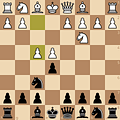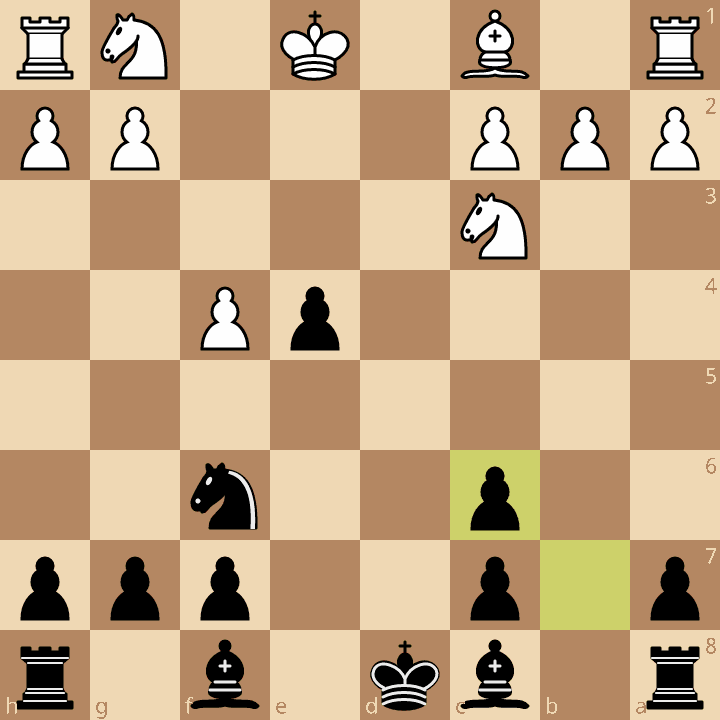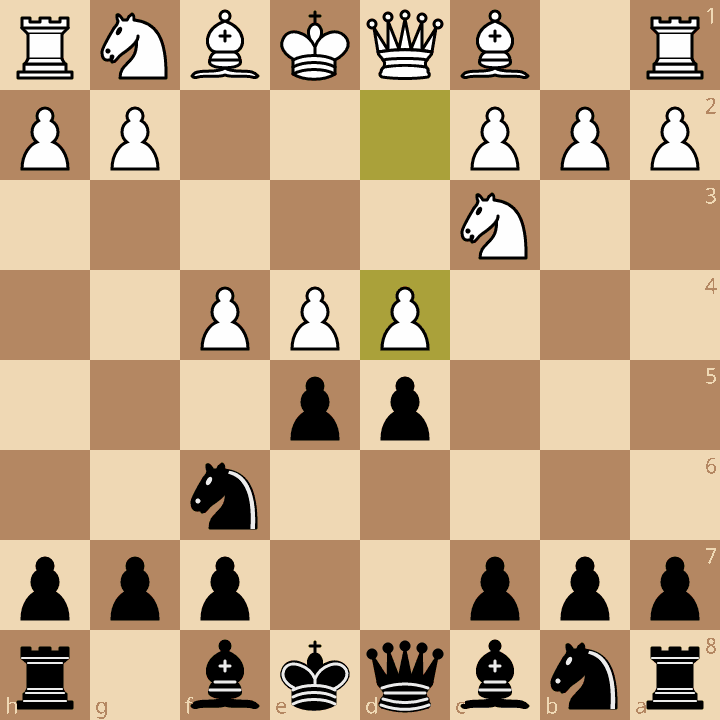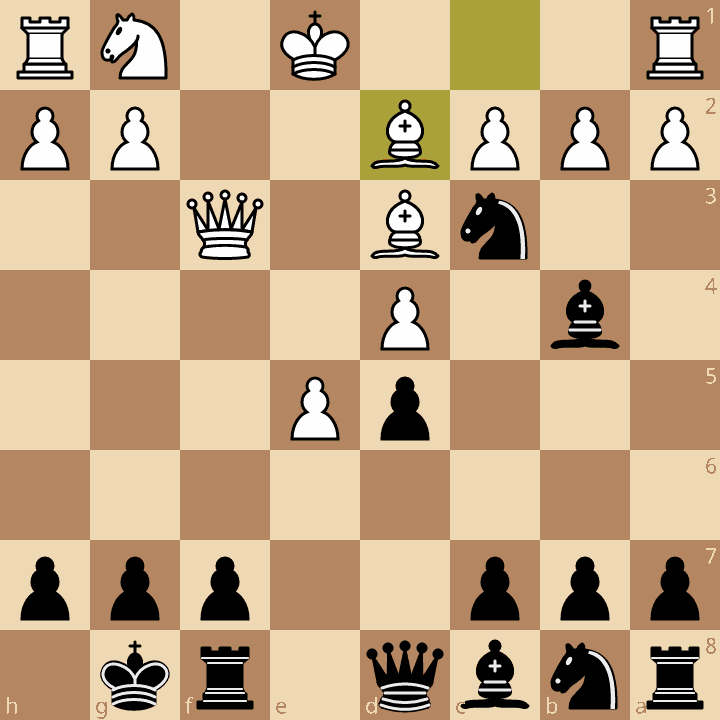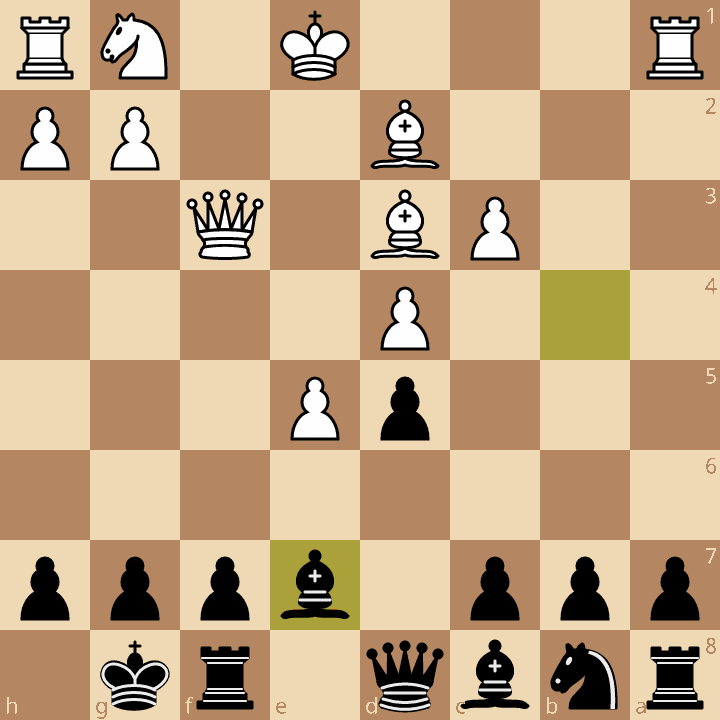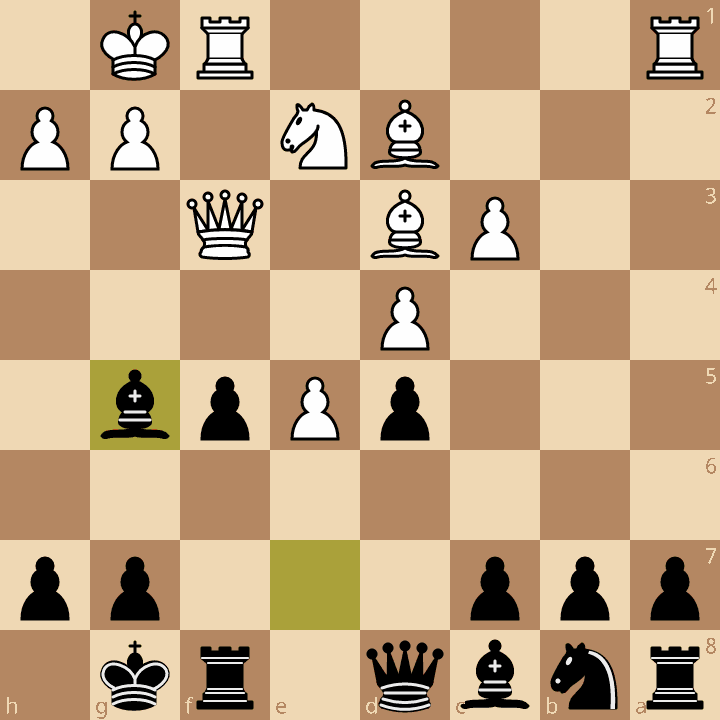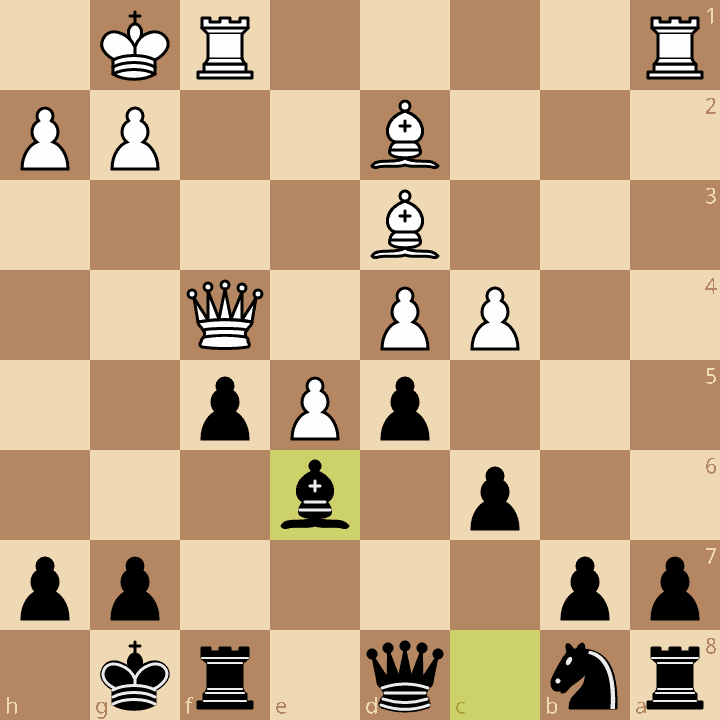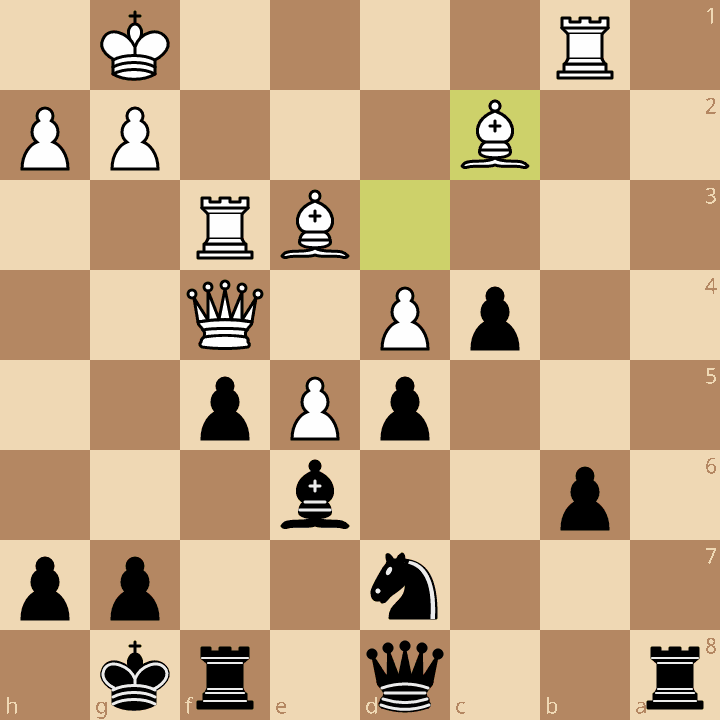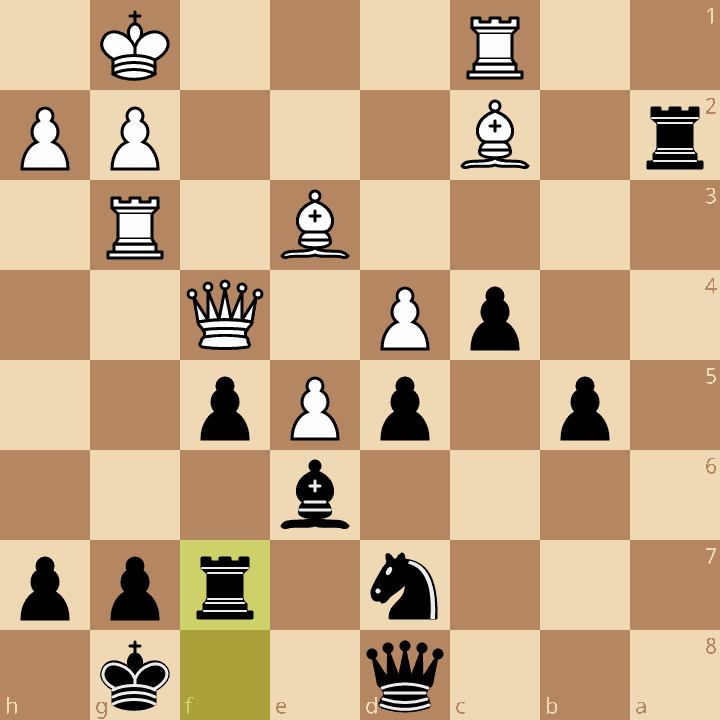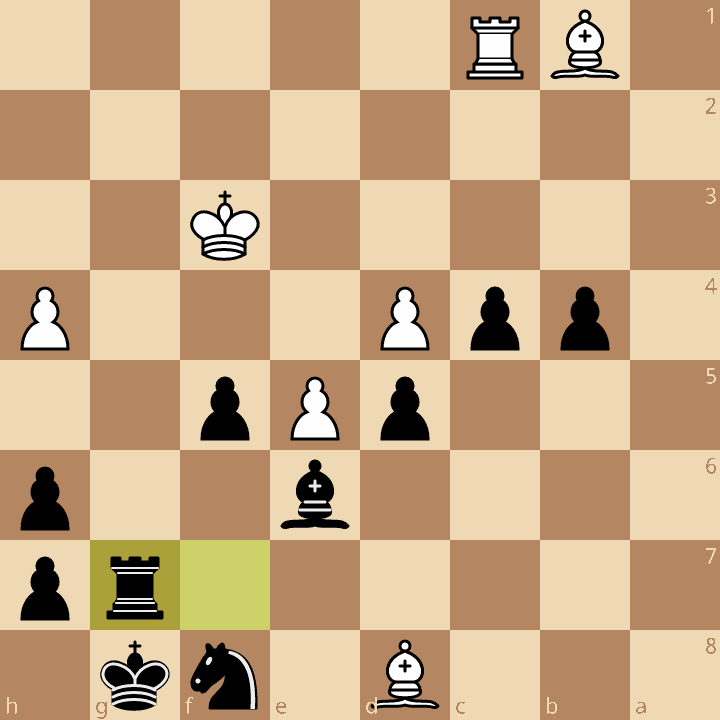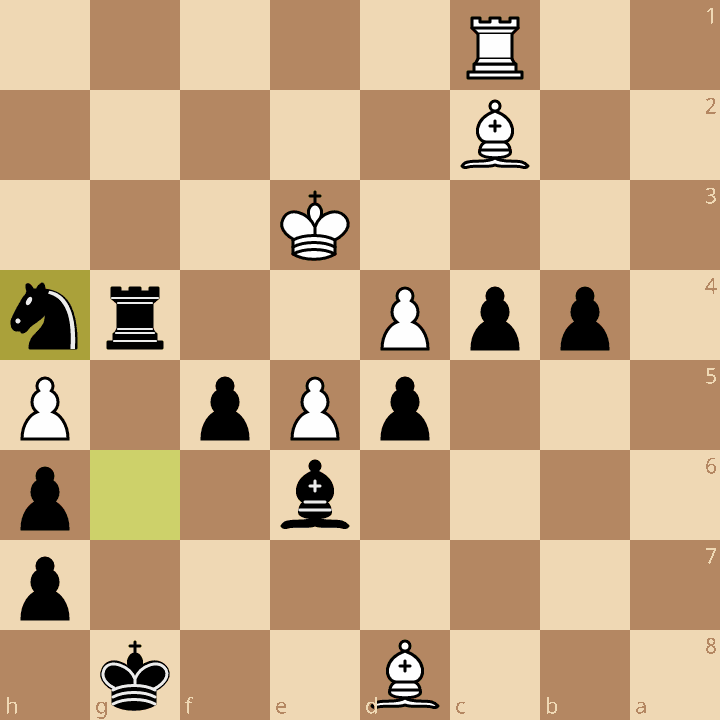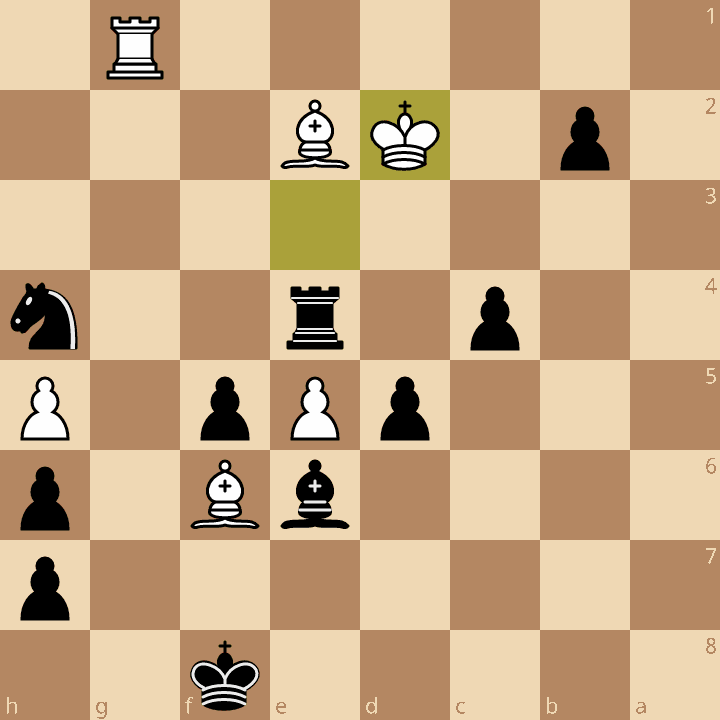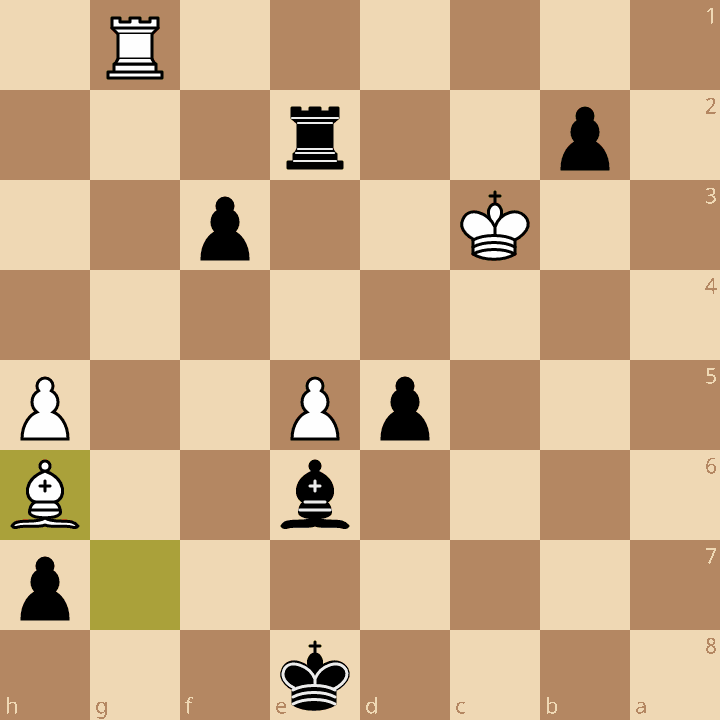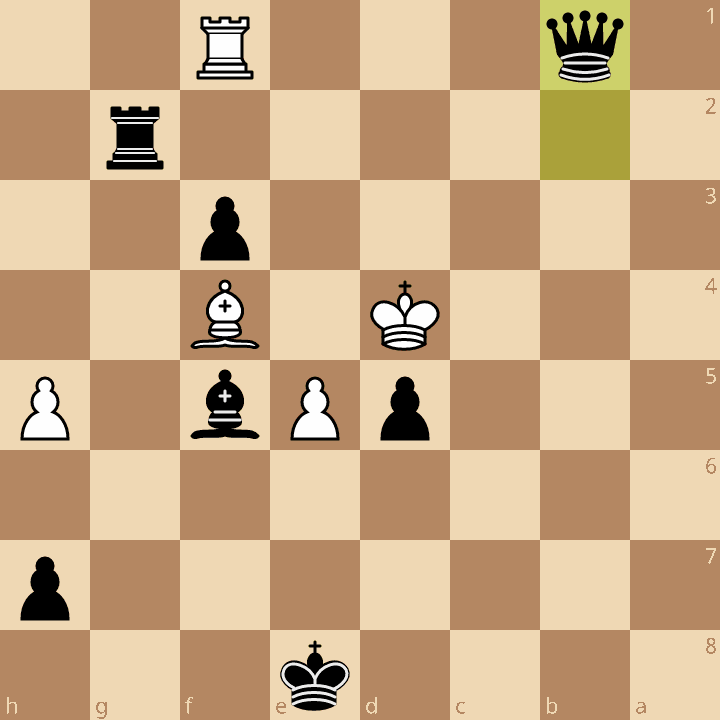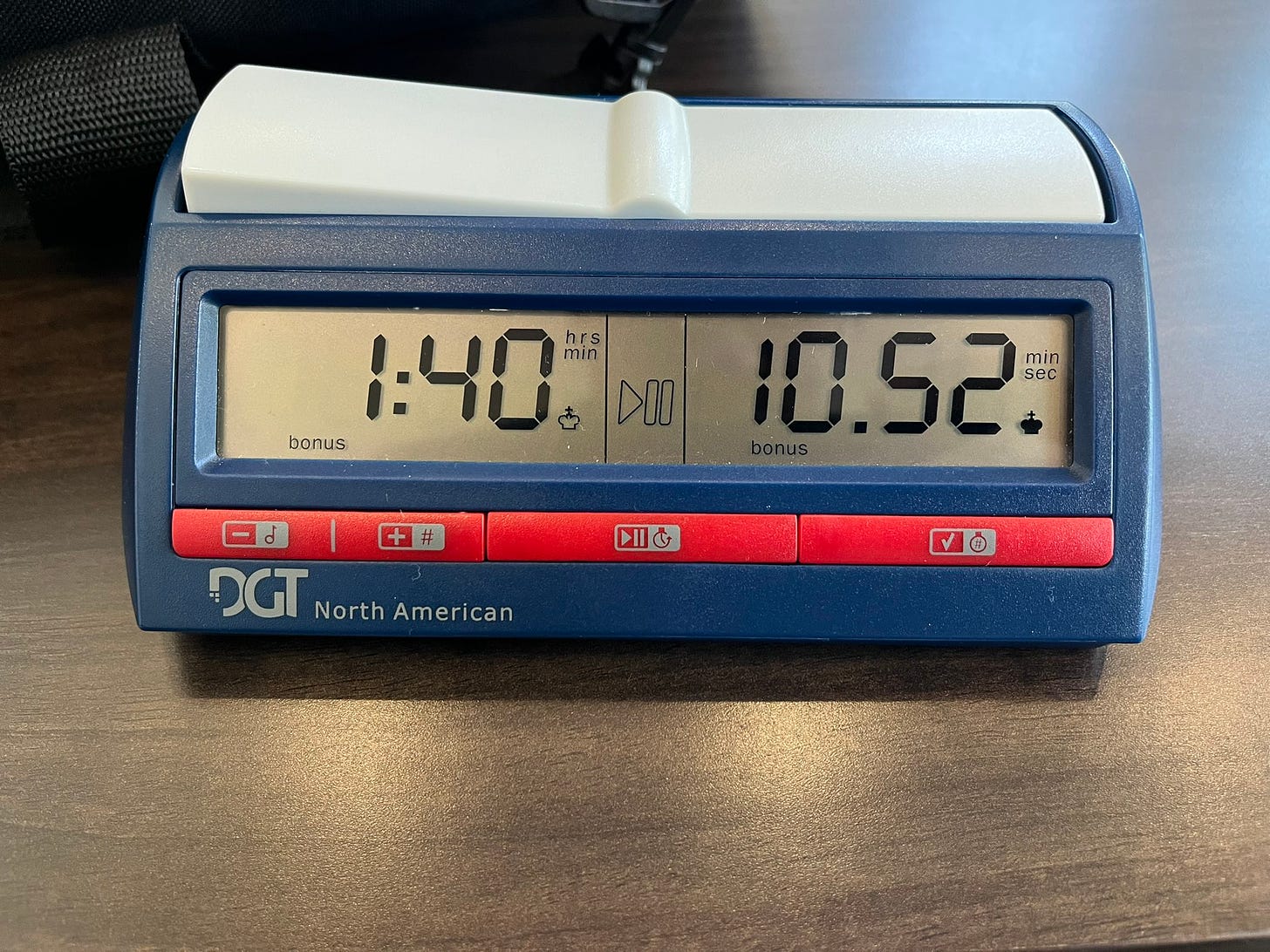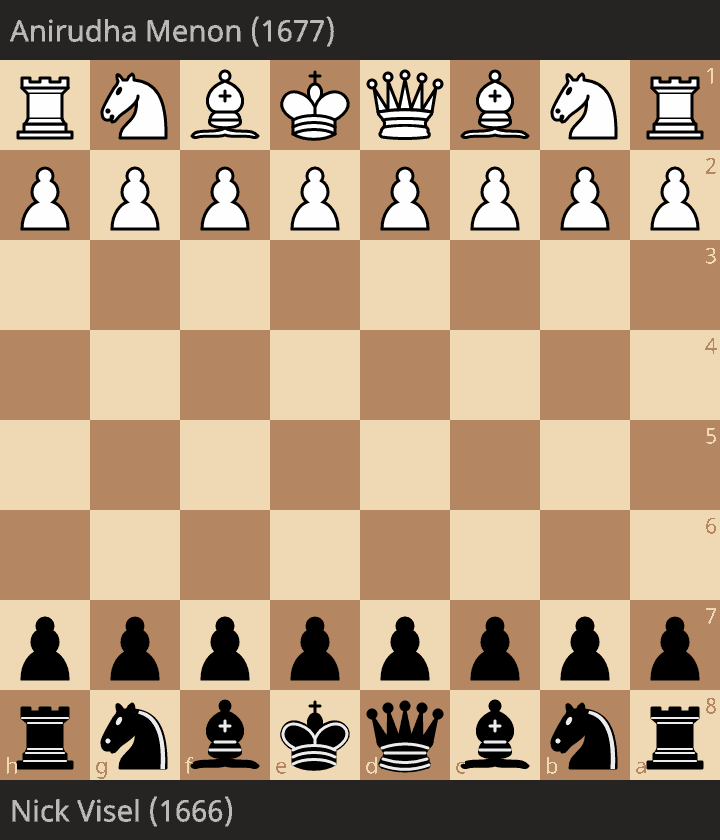Classical Game Recap: 24th Sacramento Chess Club Weekend Swiss, Round 1
Digging myself out of a materialistic hole in a weird Vienna Gambit
It’s the 24th Sacramento Chess Club Weekend Swiss tournament. This event runs alongside the SCC Senior Championship. There were only a relative few players for this event, as most of the players in the playing hall were in the championship. However, there were enough players for a 1600+ section and I was one of top seeds for that. This is game 1 of 4. Since we didn’t technically have enough players for a Swiss tournament, it was a round-robin plus one — I will later play this same opponent in the final round.
Time Control: 90 minutes with a 30-second increment per move
White: Anirudha Menon (1677 USCF)
Black: Me (1666 USCF)
1.e4 e5 2.Nc3 Nf6 3.f4
This opening is known as the Vienna Gambit. The idea is for White to get a more sound version of the King’s Gambit. While the Vienna Gambit is not taken very seriously at the upper levels of chess, I think it’s a great practical weapon, especially if Black accepts the gambit, as White’s initiative on the kingside is very powerful after 3…exf4 4.e5!
3…d5!
This is technically the Vienna Gambit Declined, but as it is Black’s only theoretically good move, it’s generally referred to in opening databases as the “Main Line”. Black follows the principle: Counter an attack on the flank with a push in the center. We don’t play White’s game, but invite them into ours.
4.d4!?
My analysis notes: “wow”. In our post-mortem, my opponent said that he doesn’t usually play this line and was improvising. Indeed, this is a rather shocking move. I took a lot of time to figure out how to respond. 8 minutes. I had never seen it before, and I don’t think any theory suggests this move.
4…Bb4!?
I chose this because it seemed like a way to get a decent position analogous to other Vienna Gambit positions. However, I had a much better choice: 4…exd5 5.Qxd4 Nc6 6.Bb5 dxe4 8.Qxd8+ Kxd8 8.Bxc6 bxc6. Black should be comfortably better
5.fxe5
What I had expected was 5.dxe5 Nxe4.
5..Nxe4 6.Qf3 O-O
Here I spent a while calculating the implications of this move. Perhaps a tad better was 6…Nc6. I couldn’t see all the way to 7.Bd3 Nxc3 8.Bd2 Ne4 9.Bxb4 Nxb4 10.Bxe4 Qh4+!
As it was, my opponent played into what I had calculated:
7.Bd3 Nxc3 8.Bd2
8…Nxa2?!
“Very greedy.” I write in my analysis notes. Instead, 8…Qh4+! and the d4 pawn should fall, with a comfortable advantage to Black.
9.c3! Nxc3?! 10.bxc3 Be7
The position has reached some quiescence, so we can discuss what happened. Black has won two pawns, but White has a significant positional advantage, and while we could say that Black has consolidated, it’s clearly not good news that White three developed pieces aiming at the kingside. Of course, this was all stuff that I had basically foreseen. But I didn’t think about how active these pieces would be for White, and his bishop’s positioning plus the semi-open f-file fully compensate for the missing a- and b-pawns. I was thinking far too materialistically for this game!
11.Ne2 f5?
Going from bad to worse. With f5 I had thought that this prevents an attack on the h7 pawn, but it also passes the e6 pawn and weakens the f5 and g5 squares, important vectors for attack by White. Instead, 11…c5! right away should have been played. After, say 12.Qh5 g6 13.Qh6 cxd4 14.cxd4 Bg4, Black is slightly better due to the loose position of the white king and the pawn structure is solid.
12.O-O 12…Bg5??
My intention was to trade attackers and win the endgame. This is a gross blunder however. White can win if he plays the right move.
13.Nf4??
My opponent played this move almost immediately. In fact, a quick clock check: White has 92 minutes. I have 52 minutes. My opponent has been playing quickly and thinking on my time. I’m playing patient but made a pretty poor move. Thankfully, my opponent’s impatience is giving me extra chances. Correct, and completely winning for White, is 13.Bxg5! Qxg5 14.Qxd5+ (check!) Kh8 and only then, 15.Nf4: the light squares are very weak and black’s queenside remains undeveloped.
Back to the game.
13…c6?!
Too slow. Instead, 13…Bxf4! 14.Qxf4 Nc6 would keep the balance.
14.c4?!
This is where things begin to go wrong for my opponent. My opponent should continue the attack: 14.Qh5, 14.Qg3, 14.Rae1, 14.Qh3 or even 14.Bc1 would keep a very nice advantage.
14…Bxf4 15.Qxf5 Be6
Trying to solidify the d5 square and block the e6 pawn from moving.
16.c5?
Releasing this tension releases me from the worry of a pawn capture on d5. Now Black is in a great position — White doesn’t have very many ways to improve, whereas Black can develop further.
16…Nd7 17.Rab1 b5! 18.cxb6 axb6
In a few moves, I have created a passed pawn and activated my last undeveloped piece on a8. All of this is due to the hook that White created on c5. Obviously allowing the b5 pawn to simply sit on that square passed and protected was a bridge too far, so my opponent had to make these trades here, but now my play on the queenside becomes a huge thorn in his side.
19.Rf3
Still dreaming of the attack.
19…c5 20.Be3
20.dxc5? bxc5 would be even more painful, as now White would have to contend with two connected passed pawns in the center that would expand in quick order due to tempo gains on the bishops.
20…c4!
Nimzowitsch was famous for speaking of the “passed pawn’s lust to expand.” Now Black has two passed pawns on the queenside.
21.Bc2 Ra2!
Nimzowitsch was also famous for speaking of the absolute 7th rank. This rook does an excellent job of discoordinating White’s piece configuration and White has to twist in knots to keep things working right.
22.Rc1 b5!
The further my pawns advance, the stronger they become.
23.Rg3!?
I recognized this move as the sign of an incoming attack of desperation. My opponent still has more time on his clock than when the game had started, but every move, he’s sighing deeply and pushing the pieces more forcefully, signaling his frustration. I’m trying not to let my face show it, but I’m really enjoying feeling his emotions over the board. I was prepared for a defensive reorganization of all my pieces to make sure his attack wouldn’t succeed.
23…Rf7!
The point of this move was to cover the g7 square from a mating attack. White was threatening to play Qh6, so this prophylaxis prevents the success of this idea.
24.Qh6
Anyway.
24…Nf8!
The point of this move was is twofold: Cover the bishop on e6, and also protect against any mating threats on the h7-square. The knight can move to g6 or e6 from here, and with e6 over-protected (more Nimzowitsch parlance), the light square bishop is soon free to reposition itself.
25.Bb1
This threat inconveniences my rook, but it doesn’t change the problem with White’s position.
25…Ra3
This paralyzes the e3-bishop, as now, the g3-rook is busy making sure Black doesn’t have gxh6. If the bishop moves, Black wins at least a rook.
26.Bg5?!
I didn’t expect this move, and had to spend some time calculating its ramifications.
26…Rxg3
This keeps it simple, but 26…Qb6 would have been better.
27.Bxd8 Rxg2+
A desperado that comes with check, winning a pawn. However, this opens the g-file and gives white some counterplay with the rook on the 7th rank. This move is completely fine, of course, but 27…gxh6 may have been a slightly more practical choice.
28.Kxg2 gxh6 29.Kf3 b4 30.h4 Rg7
Black has all the trumps in the form of the passed pawns. White could resign here, but is playing against my clock. However, I knew the winning plan and generally was able to keep my head while figuring it out, despite the adrenaline of knowing I was about to get the point.
31.Bc2 Rg4 32.Ke3 Ng6!?
32…Nd7 was another idea.
33.h5 Nh4
The knight is kind of immobilized here, but it doesn’t matter. White cannot easily attack it.
34.Bd1 Re4+ 35.Kf2 b3
Ever closer to victory.
36.Be2 Rxd4 37.Bf6 b2
And closer.
38.Rg1+ Kf8 39.Ke3 Re4+ 40.Kd2
40…c3+!?
40…d4 was much stronger, but the text still simplifies a winning position.
41.Kxc3 Rxe2 42.Bxh4
For a moment I panicked here, thinking I had lost a piece, but that simply isn’t true. I was nervous as my clock was getting a bit low (13 minutes vs my opponent who was near 100 by this point). I calmed myself, seeing that I was still winning. However I have noticed a pattern in endgames like this where my nerves prevent me from seeing clearly winning positions, or even moves or ideas. I reminded myself: “It doesn’t matter. I’m up three pawns!”
42…f4 43.Bf6
White is starting one last counterattack, but has no chance to win here.
43…f3 44.Bg7+ Ke8 45.Bxh6
45…Rg2?!
45…f2 46.Rb1 Re1 was an easy promotion and win, but my nerves were blinding me. I could only see forward by trading this rook off and promoting one of the two pawns.
46.Rf1 Bg4?!
46…Bf5! threatening b1=Q
47.Bf4 Bf5!
Found it this time.
48.Kd4 b1=Q 0-1
How was the clock situation? Glad you asked:
Yep. One hour and 40 minutes vs my 10 minutes and 52 seconds. The entirety of the game was basically played on my time, since my opponent apparently refused to think with his. Lucky me, otherwise the first half of the game would have been over swiftly.
A GIF of the game:
Main takeaways
Taking my time is always worth it. I used almost all my time and I think I managed my time well.
I have a long way to go when it comes to calculating the implications of certain moves. In general I notice a pattern in myself where I do not always take into consideration all the important moves. I need to become better at looking more broadly at my opponent’s options.
Staying calm is worth it. My opponent was tilting more and more through the course of the game and it clearly affected his decision-making. Multiple times I had to stifle some laughter because it was obvious and a even bit comical. But I also had to remember not to take offense at how loud some of his moves were and keep myself objective and not let his attitude roll off onto me for this game.

